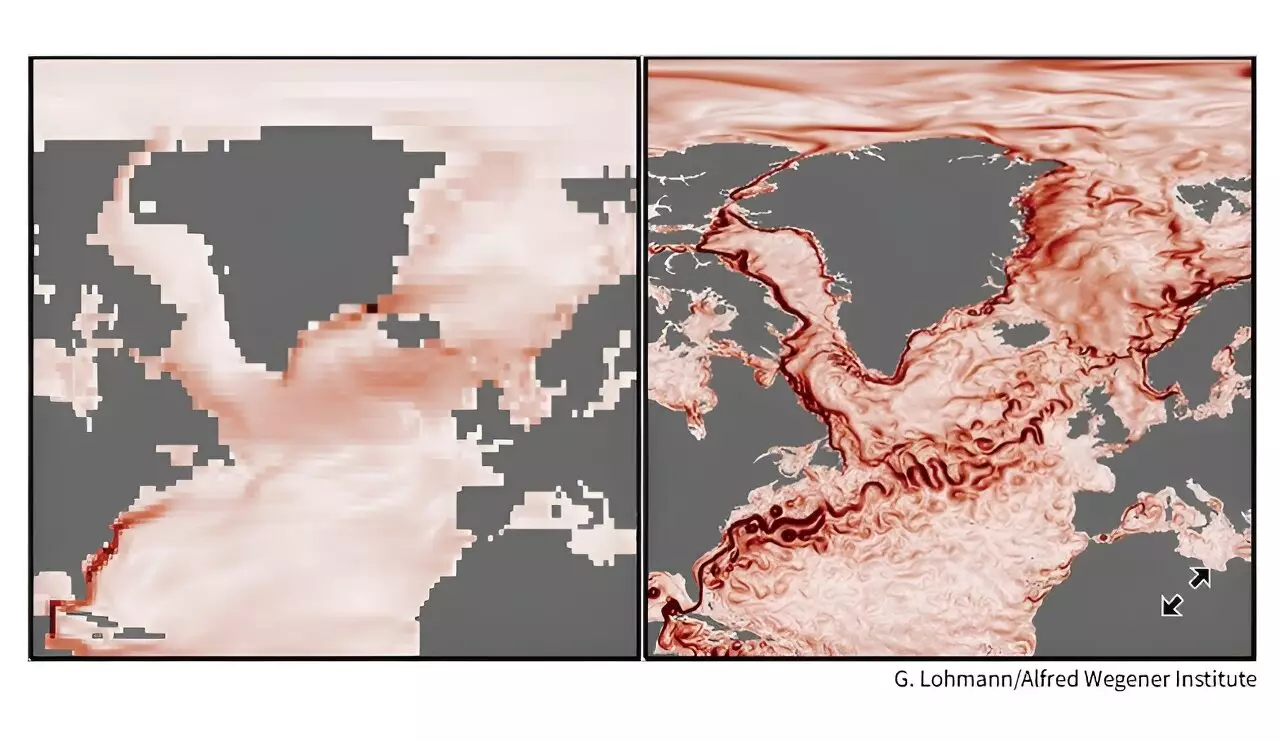In Northern Europe, the Atlantic Meridional Ocean Current (AMOC) plays a crucial role in maintaining warmer temperatures, despite its location on the globe. However, due to global warming, the future of this vital current system is uncertain. Climate models initially projected that the AMOC would cease to run by 2200, but recent observations indicate that parts of the current are already slowing down. Scientists have now developed a high-resolution climate model that provides a more detailed view of the AMOC, revealing surprising findings that challenge previous beliefs.
Under the influence of global warming, the AMOC faces significant challenges. The mixing of saline northeastern AMOC with cool freshwater from the melting Arctic, combined with increased rainfall characteristic of global warming, reduces the current’s density and salinity. As a result, the cooling and sinking in the northern Atlantic, which are essential for maintaining the current’s flow, are diminished. This disruption could have far-reaching consequences for northern European ports, which rely on the AMOC to remain ice-free.
Scientists have recently employed a high-resolution climate model, the Community Earth System Model, to gain a more detailed understanding of the AMOC’s future. This model allows researchers to explore smaller physical features of the ocean, such as eddies and gyres, which were previously overlooked by low-resolution models. By simulating the atmosphere’s carbon dioxide levels increasing rapidly, the researchers discovered unexpected regional variations and tipping points within the AMOC system.
The high-resolution model revealed that the AMOC could experience sharp declines in some areas while paradoxically increasing in others under extreme greenhouse gas emissions. These regional variations, combined with tipping points within the AMOC system, highlight the complex nature of climate change and its potential impact on marine ecosystems. It is crucial for future climate models to incorporate regional dynamics to anticipate and respond to dramatic changes in the planet’s systems.
As the Earth faces an uncertain climatic future, the insights from the high-resolution climate model underscore the importance of advancing climate models to accurately predict and adapt to changes in the AMOC. The feedback between the overall AMOC and small-scale AMOC presents a challenge for understanding the future behavior of this critical ocean current. Only through continued research and innovation in climate modeling can we hope to mitigate the effects of global warming on the AMOC and its associated impacts on Northern Europe.


Leave a Reply